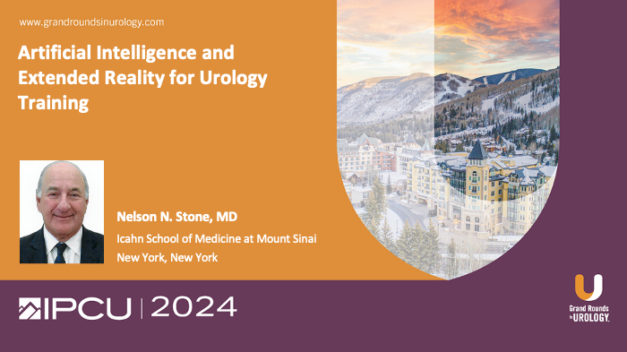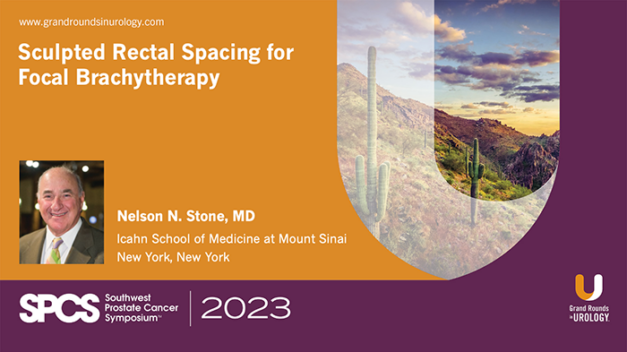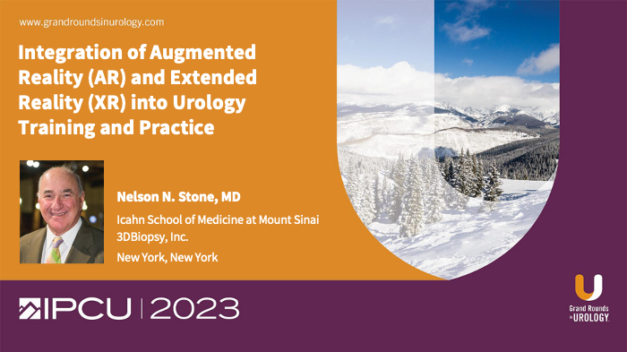Artificial Intelligence and Extended Reality for Urology Training
Nelson N. Stone, MD, explores the possible applications and current roadblocks of artificial intelligence (AI) and extended reality (XR) for urological training. He begins by outlining the need for more efficient methods of training urologists than training them exclusively on-site.
Dr. Stone discusses issues in traditional surgical training. He notes that the lack of proctors and the OR training model of “education by random opportunity” are not efficient methodologies.
Dr. Stone then outlines a theoretical model, called “Educational System for Instructorless Training” (ESIST), which incorporates XR and AI as an augmentation to proctor guidance during residency training. He acknowledges that neither XR or AI is at the point where they can replace proctors during residency training.
Dr. Stone concludes by presenting a video demonstration of what an ESIST program would look like in practice on a prostate phantom. After the demonstration, he encourages the audience to learn more about advancements in training at the 27th Annual Prostate Cancer Symposium, and conducting a brief Q+A with the audience.
Read More




